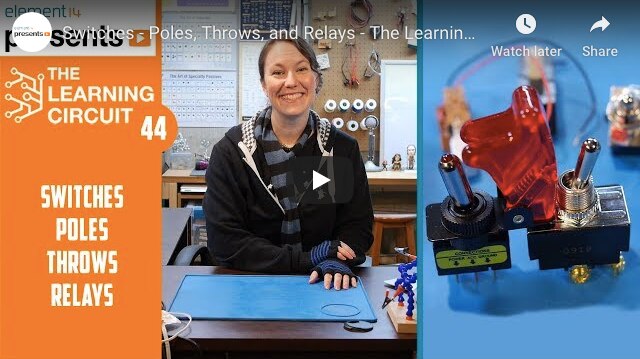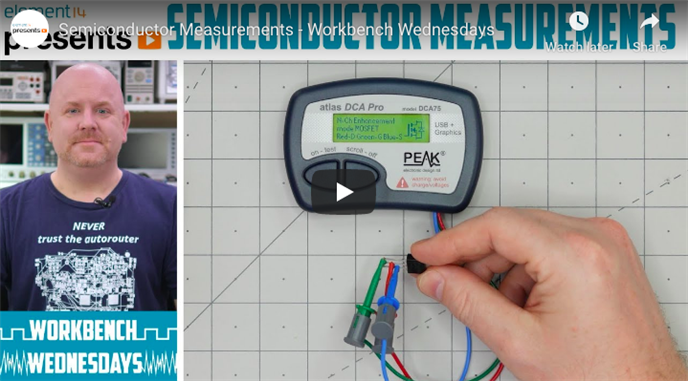One of the goals of the element14 community is to create an inclusive environment that makes electronics accessible to everyone. One of the things we're going to be doing from now on is gathering some of the great content that is already on the community as well as provide additional commentary so that you can make the most of your webinar experience. Supporting these webinars by attending, or viewing On Demand, supports these relationships and allows us to bring more exciting guests.
On September 12th, 2019 at 9 AM CT // 2 PM GMT: Join us as we host a webinar with Gabriel Sikorjak, an Omron Technical Product Manager, currently dedicated to supporting the MOSFET relay range, for:
A metal–oxide–semiconductor field-effect transistor (MOSFET, MOS-FET, or MOS FET) is a field-effect transistor (FET with an insulated gate) where the voltage determines the conductivity of the device. It is used for switching or amplifying signals It is a solid-state device that replaces a coil-activated mechanical switch with an optically isolated input stage driving a MOSFET. It offers superior performance to an electromechanical relay in many applications. Internally, a MOSFET relay includes an input-side LED and an output side with a photodiode dome array (PDA), a control circuit, and an output FET block.
A electromechanical relay is an electromagnetic switch operated by a relatively small electric current that can turn on or off a much larger electric current. At the heart of the relay is an electromagnet, a coil of wire that becomes a temporary magnet when electricity flows through it.
The electromechanical relay, was used in some early calculators and computers and invented in 1835 by Joseph Henry, an American pioneer of Electromagnetism. Henry's interest was solely in the science of electricity and the relay began as a laboratory trick to entertain students. It was at the College of New Jersey that Joseph Henry demonstrated the first primitive "relay" telegraph. He used a self-made electromagnet to arrange a small intensity magnet to control a much larger quantity magnet. This led to speculation that the relays could be used to control electrical machines over large distances, a principle that would be applied to another invention he was working on, the electric telegraph, a forerunner of the telephone. This invention was successfully developed by William Cooke and Charles Wheatstone in England and more famously, Samuel F.B. Morse in the United States. The relay was later used in telephone switching and early computers. It remained hugely popular until the transistor came along in the late 1940s.
A good place to start if you are unfamiliar with the basics of electromagnets, transmitters, relays, and electronics in general is The Learning Circuit with makerkaren:
The Learning Circuit 27: How Transistors Work
The Learning Circuit 35: Electricity & Magnetism
The Learning Circuit 36: DIY Electromagnet
The Learning Circuit 44: Switches: Poles, Throws & Relays
There's also A Bald Engineer Video: MOSFET Tutorial by baldengineer who is best known on the community for his work on WorkBench Wednesdays and element14 presents:
In it he talks about how MOSFETs are the most common transistors used today. They are switches that can be used an Arduino, BeagleBone, or Raspberry Pi. When it comes down to it, MOSFETs are pretty complicated devices. The video covers the basics of what you need to use them in your circuit, including calculating if you need a heat sink or not. You'll also learn what they are and how to use them. Its the second part of a two part tutorial. You can view Part 1 here:
There's also this great tutorial he did:
Which he did as a supplement to Workbench Wednesday 12: Semiconductor Measurements:
Another great thing to check out in order to wet your interest in the upcoming webinar would be the excellent Experimenting with MOSFET series from jc2048:
Experimenting with MOSFETS: Total Gate Charge
Experimenting with MOSFETs: Transfer Characteristic
Experimenting with MOSFETS: Threshold Voltage
Check out more great content by jc2048 by visiting jc2048 Blog Index.
Finally, visit content sponsored by Omron to get a feel for what might be discussed in the webinar and to ready any questions you may have for them:
How to use MOSFET Relays for Micro Analog Signal Switching
Power Relays Quiz
Power Relays Quiz Resource


